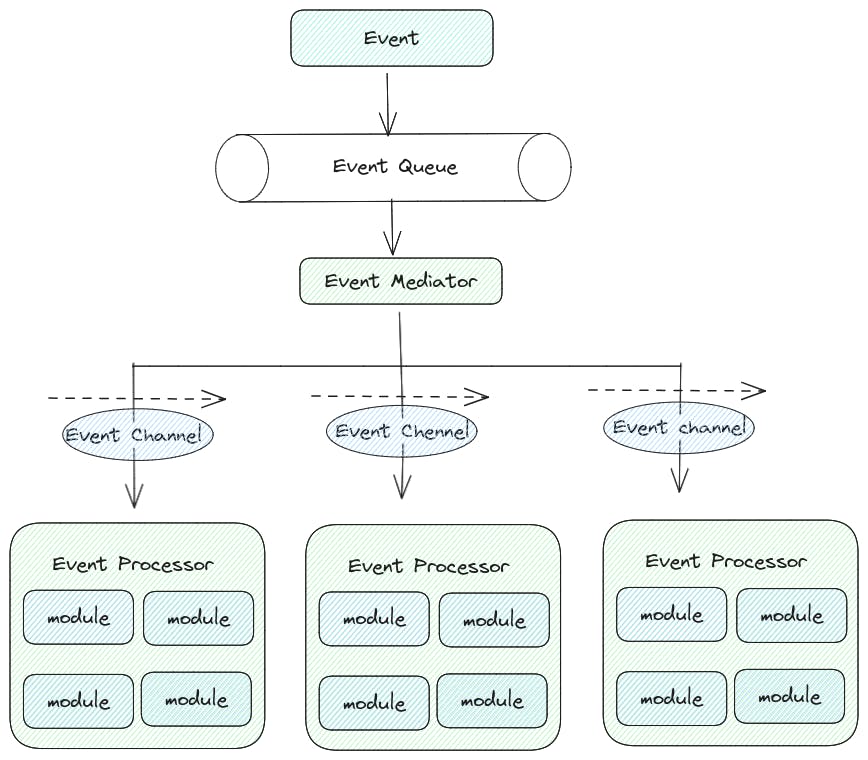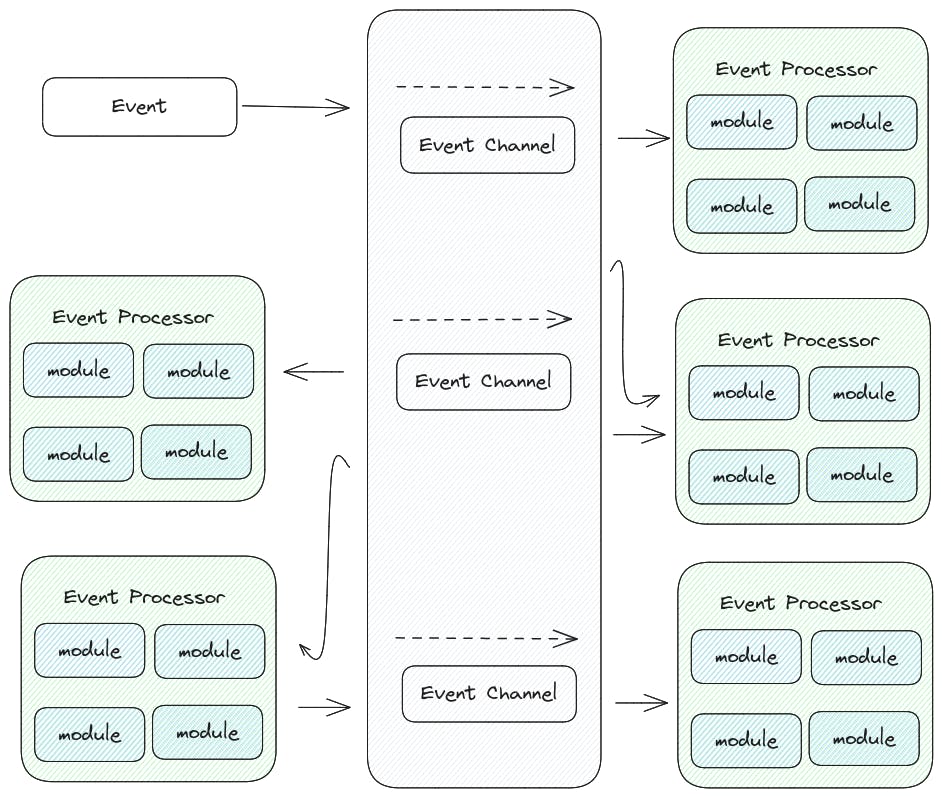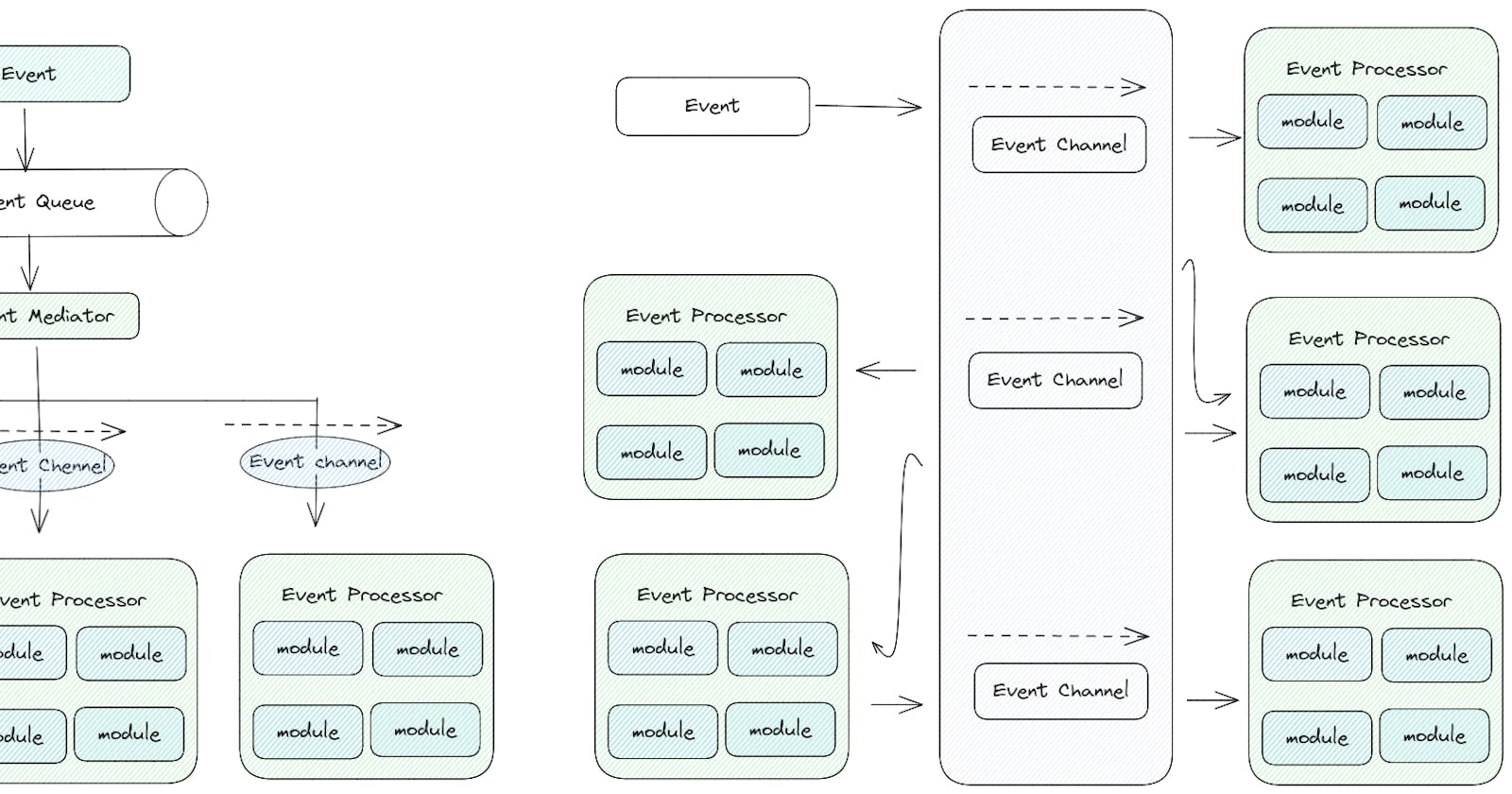Beyond Request-Response: Understanding the Principles and Benefits of EDA
Traditional architecture, like a chatty neighbor, keeps asking, "What do you want? What do you want?" EDA, on the other hand, whispers, "Something happened," leaving everyone to react in their own brilliant ways. This seemingly simple shift unleashes a tidal wave of benefits:
Scalability: No more bottlenecks waiting for responses. Events flow freely, letting your system handle a million conversations at once.
Availability: Events keep moving even if parts of the system stumble. Imagine one server tripping, the others just keep dancing to the event beat.
Unchain the microservices: Break free from rigid dependencies. Each microservice becomes a sovereign citizen, reacting to events at its own pace.
With EDA, information simply flows, empowering systems to react, adapt, and thrive in the ever-changing tide of data. So, buckle up, folks, as we dive into the fascinating world of event-driven architecture!
Key Concepts of EDA: Where the Magic Happens
EDA is like a busy city, flowing with information. But what keeps it all running smoothly? Let's explore the core concepts that make EDA tick:
1. Events: The lifeblood of the city, events are messages that announce something has happened. A new order placed, a sensor triggered, a user logged in – these are all events, carrying the pulse of change through the system.
2. Event Producers: Think of them as the news broadcasters, generating and publishing events whenever something noteworthy occurs. Each system acts as a producer, whispering the news into the digital airwaves.
3. Event Consumers: The eager listeners, they subscribe to specific events that interest them. When an event arrives, these consumers spring into action, updating databases, sending notifications, or triggering further workflows. Imagine shops bustling with activity as an "order placed" event arrives.
4. Event Brokers: The central hub, responsible for routing and delivering events to the right consumers. Think of them as the postal service, sorting and sending event messages to their intended destinations.
5. Command Query Responsibility Segregation (CQRS): Not always in the spotlight, CQRS plays a supporting role in some EDA implementations. It separates read and write operations, ensuring smooth event processing without conflicting requests.
These concepts come together to create a symphony of action. Events flow, consumers react, and information dances through the system like a well-choreographed ballet. With each beat, EDA unlocks flexibility, scalability, and resilience that traditional architecture simply can't match.
Diving into EDA Topologies:
Imagine information flowing through your system, but how does it know where to go and what to do? That's where EDA topologies come in, acting as the traffic lights for your event data. Let's dive into the two main players:
1. Mediator Topology:
Think of it as the air traffic controller for your information flow. Events, like incoming flights, arrive with specific intentions. The mediator, with its eagle eye and meticulous planning, directs each event to the right "landing strip" – the relevant consumers waiting to react. It's a complex ballet of routing, orchestration, and error handling, all executed behind the scenes to keep the music of your system playing flawlessly.
Key Components:
Event Queues: These act as transport highways, carrying events to the mediator for processing. They can materialize as message queues, web service endpoints, or other suitable technologies, tailored to your architectural needs.
Event Mediator: The maestro of the system, it receives initial events, orchestrates their execution, and dispatches processing events to event channels. Think of it as the brain meticulously planning each step of the dance.
Event Channels: These serve as communication pathways, carrying processing events from the mediator to the corresponding event processors. Message topics are often favored to enable multiple processors to react to the same event, fostering parallel execution and scalability.
Event Processors: These dancers execute the actual business logic, performing specific tasks triggered by processing events. They operate independently and autonomously, ensuring a highly decoupled architecture that promotes resilience and flexibility.

Choreographing the Flow:
Event Initiation: A client kickstarts the process by sending an initial event to an event queue.
Mediator Intervention: The mediator gracefully receives the event from the queue, ready to initiate the orchestration.
Step-by-Step Guidance: For each step defined in the initial event, the mediator sends a processing event to a designated event channel, ensuring clear instructions for each processor.
Processors in Action: Event processors, eagerly listening on the channels, spring into action upon receiving processing events. They execute their designated tasks, processing the data and fulfilling their roles in the event's lifecycle.
Technical Considerations:
Implementation Options: The event mediator can be realized using various technologies, including message brokers, workflow engines, or custom-built solutions. Understanding these options is paramount for architects to make informed choices aligned with specific requirements.
Performance Optimization: In high-volume systems, careful attention to performance is essential to mitigate potential bottlenecks within the mediator. Strategies like load balancing, caching, and asynchronous processing can help maintain a smooth flow of events.
Scalability Planning: While the mediator topology offers centralized control, its scalability can be limited compared to broker-based topologies. Anticipate growth and consider strategies for scaling the mediator component as needed to accommodate increasing event volumes.
2.Broker Topology: Embracing Decentralized Agility
In the bustling world of Event-Driven Architecture (EDA), the broker topology emerges as a decentralized hub for event-driven interactions, fostering a dynamic ecosystem where systems communicate and react autonomously. Let's explore its technical intricacies and uncover its unique advantages:
Key Components:
Broker: The heart of the topology, a lightweight message broker (e.g., ActiveMQ, RabbitMQ) acts as a central marketplace for event exchange. It provides channels for event routing, ensuring efficient delivery without imposing strict control.
Event Processors: These independent actors, like eager merchants in the marketplace, subscribe to specific event channels and react to incoming events based on their unique capabilities and business logic. They operate autonomously, fostering a loosely coupled architecture.

Event Flow in Motion:
Event Initiation: A producer kickstarts the process by publishing an initial event to the broker, akin to a proclamation in the bustling marketplace.
Event Delivery: The broker diligently routes the event to its designated channel, ensuring it reaches the appropriate audience.
Processors in Action: Event processors, listening attentively to their subscribed channels, spring into action upon receiving events of interest. They execute their designated tasks, potentially generating new events to trigger further reactions.
Chain Reaction: These newly generated events flow back into the broker, continuing the chain of actions and enabling a ripple effect across the system.
Simplicity and Scalability:
The broker topology shines in scenarios involving:
Relatively simple event processing flows that don't require intricate orchestration or transaction management.
Systems prioritizing scalability and flexibility, as event processors can be added or removed independently without disrupting the overall architecture.
Fault tolerance, as the decentralized nature allows other processors to continue operating even if one fails.
Technical Considerations:
Event Tracking: Tracing the flow of events and understanding their relationships can be more challenging in a decentralized topology. Consider tools and techniques for visibility and monitoring.
Data Consistency: In certain scenarios, ensuring consistency across multiple processors might require additional coordination mechanisms or eventual consistency approaches.
Dead Letter Handling: Strategies for handling events that cannot be processed successfully are essential to prevent message loss and potential issues.
Choosing the Right Topology
Navigating the world of EDA topologies can feel like picking the right song for your data - each rhythm caters to a different kind of movement. Let's delve into a pattern analysis to guide you towards the perfect match for your system's needs.
Complexity :
Mediator: Thrives in orchestrating intricate multi-step processes with dependencies, ensuring flawless execution like a well-rehearsed ballet. Think complex order processing or fraud detection workflows.
Broker: Embraces simplicity, ideal for straightforward event flows where independent reactions shine - imagine real-time stock price updates triggering individual trading bots.
Efficiency in the Spotlight:
Mediator: Centralized control brings efficiency at the cost of potential bottlenecks. As event volume soars, the conductor might struggle to keep the orchestra in sync.
Broker: Decentralized nature fosters scalability and avoids single points of failure. The data marketplace thrives under high workloads, like a bustling farmers' market adapting to surging customer traffic.
Responsiveness Takes Center Stage:
Mediator: Offers swift, coordinated reactions due to centralized orchestration. Think of a sports team executing plays with precision under the coach's guidance.
Broker: Decentralized reactions can introduce slight delays as events flow through channels. Imagine news spreading organically through a crowd, each person taking in and reacting independently.
Real-World Implementations :
Mediator: Powering the intricate order processing and fraud detection workflows of e-commerce platforms like Amazon, ensuring every step plays its part seamlessly.
Broker: Fueling the dynamic, real-time interactions of online chat apps like Slack, where individual messages trigger independent responses from participants.
Choosing the Right Dance Floor:
Here's a handy table to visualize the key differences:
| Feature | Mediator | Broker |
| Complexity | Ideal for intricate workflows | Best for simple event flows |
| Efficiency | Centralized control but potential bottlenecks | Scalable and resilient but slightly slower |
| Responsiveness | Swift, coordinated reactions | Decentralized, potentially slight delays |
| Real-world examples | E-commerce platforms, order processing, fraud detection | Real-time chat apps, stock market updates, sensor monitoring |
Ultimately, the perfect topology is not a one-size-fits-all solution. Analyze your system's complexity, performance needs, and fault tolerance, and let this analysis guide you toward better decision. Remember, the right choreography unlocks endless possibilities in the mesmerizing world of event-driven architecture.
Considerations for a Thriving EDA: Building a Robust Ecosystem for Your Data Flow
An EDA system is like a thriving garden – it needs fertile ground, careful tending, and the right tools to blossom. Beyond choosing the perfect topology, several key considerations cultivate a robust environment where your data flows flourish.
1. Microservices:
EDA thrives in the soil of microservices architecture. Imagine each microservice as a dedicated gardener, autonomously tending its own patch of data with events as the watering can. This independence empowers each service to react to events without relying on others, fostering agility and scalability. Think of a stock trading platform, where order processing, price updates, and user notifications each have their own dedicated microservice, reacting independently to relevant events.
2. Monitoring and Observability:
Just like a vigilant gardener keeping an eye on pests and wilting plants, monitoring and observability are crucial for your EDA system. Track event flows, identify errors, and monitor overall system health to ensure your data dance continues uninterrupted. Tools like tracing platforms and dashboards shed light on event journeys, pinpointing bottlenecks and ensuring your system runs smoothly.
3. Data Storage:
Where does your event data rest when the dance is over? Diverse data storage options cater to different needs. Durable databases like Cassandra or DynamoDB ensure persistence, while time-series databases like InfluxDB excel at storing historical data for analysis. Consider your data volume, access patterns, and analysis goals to choose the perfect storage solution for your EDA garden.
4. Testing and Debugging:
Testing and debugging in an asynchronous world can be like trimming a tangled rose bush. Traditional methods struggle with the unpredictable nature of events. Embrace tools like chaos testing and distributed tracing to simulate real-world scenarios and identify potential issues before they bloom into full-blown problems. Remember, proactive testing and debugging keep your EDA garden healthy and resilient.
By nurturing these key considerations, you'll create an environment where your EDA system thrives. Embrace the power of microservices, keep a watchful eye on your data flow, choose the right storage solutions, and don't shy away from testing and debugging. Remember, with dedication and the right tools, your EDA garden will blossom into a vibrant ecosystem, where information dances freely and your applications reach their full potential.
Conclusion
Remember, EDA is not a one-size-fits-all solution. Choosing the right topology, be it the meticulous mediator or the dynamic broker, requires a mindful approach. Consider your system's complexity, performance needs, and fault tolerance to find the perfect solution.
Embrace the considerations outlined here:
Cultivate microservices: Let independent gardeners tend their data patches, fostering agility and scalability.
Maintain a watchful eye: Monitor event flows, identify errors, and keep your system healthy with robust monitoring and observability tools.
Choose the fertile ground: Select the data storage solution that caters to your specific needs, ensuring your event history thrives.
Prune with precision: Employ chaos testing and distributed tracing to identify and eliminate potential issues before they take root.
Take action! Dive deeper into the world of EDA with these resources:
Books:
"Building Event-Driven Microservices" by Sam Newman
"Software Architecture Patterns"v Mark Richards
Blogs: Martin Fowler's blog (martinfowler.com), Confluent blog (confluent.io/blog)
Open-source frameworks: Apache Kafka, RabbitMQ, Spring Cloud Stream
